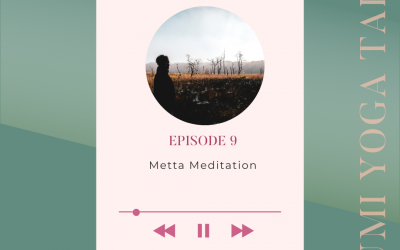The Ashtanga Opening Chant
It's Meaning and why we chant itThe Ashtanga Yoga Opening Chant
In the Ashtanga Yoga tradition it is customary to come to samasthiti and chant the opening mantra (sometimes referred to as “invocation”) together. In the once a week led class this happens at the beginning of class and during Mysore Yoga practice we usually chant at the beginning of the Mysore Yoga practice window.
The opening chant is a way to extend gratitude, humility and respect to all the people (teachers and students) who walked this path, did this practice before us and enabled the practice to survive so that we can exprience its benefits. Chanting is a tool to suspend the normal movement of the discursive mind (“manas”) and, thus, allows for a contemplative state. Moreover, the opening chant cleanses the energy of a space for yoga and prepares our mind, body and emotions. Altogether, chanting the opening mantra is a wonderful way to start practice!
Of interest is that the opening mantra is composed of two parts stemming from different eras: The first part is derived from the Yoga Taravali of Adi Sankara (early 8th century) and the second part is a meditation verse describing Patanjali (the composer of the yoga sutras, the 8-limbed path of yoga, roughly 2nd century BCE). Both parts also have slightly different rhythms to it.
The opening mantra conveys an attitude and metaphorical meaning.
The attitude of the opening mantra:
The attitude of the opening mantra is in setting an intention towards a state of receptivity; serving as a reminder that we learn by the grace of our teachers – whoever / whatever they may be. No matter “how advanced” we become in practice, we always come to practice at students. To be effective yoga pracitioners we have to let go of arrogance, plans and expectations and be willing to be with what is present, to learn and grow.
The metaphorical meaning of the opening mantra:
For the metaphorical meaning of the mantra, let’s look at part 1 and 2 of the mantra separately.
Part 1
vande gurūnāṃ caraṇāravinde sandarśita-svātma-sukhāvabodhe |
niḥśreyase jāṅgalikāyamāne saṃsāra-hālāhala-mohaśāntyai ||
The first part of the mantra conveys gratitude to any and all of the teachers and the role they serve as healers. We hope to receive energy and knowledge from our teachers in order to help us eliminate ignorance and delusion.
- vande – traditional bow, “I bow”, a gesture of respect and humility
- gurunam – can either mean plurality of teachers but also ‘teaching as a principle”, thus encompassing all beings and situations that provided the fuel for us to learn and grow. Moreover, the word guru also pertains to the teacher that resides within us.
- caranaravinde – the teacher’s feet, lotus feet; we bow down / ly down with our head facing the teacher’s feet. Here, the top of our head which houses the 7th chakra aligns with the feet of the teacher (the feet is where the two main energetic channels Ida and Pingala exit)
Our teachers greatly help us to cut through unbeneficial conditioned patterns, helping us view the world as it is. In the chant, our teachers are regarded as “jungle physicians” (shamans) who have the capacity to enter the twisted jungle of our minds guiding us towards healing. They have walked this path we are on before us and can provide guidance. We practice to remove our unbeneficial habitual patterns in order to experience ourselves and the world as we are / it is and not from our conditioned exeprience, releasing delusion.
-
- jangalikayamane- “jungle physician”, shaman – yogis in the past
- used to reside in the jungle, solitary, connected to the natural world, and also acting as physicians
samsara – “sara” flowing, “sam” together; flowing together / sticking together; all our conditional experiences flow together
- halahala – “poisonous herb”, “poison of the world”; hala can also pertain to a wheel turning. “Halahala” (poison) depicts our conditioned existence which makes us participate in cyclical patterns of unbeneficial delusions and beliefs; the mind operating on autopilot based on our conditioning
- mohasantyai – release from our delusions
Moreover, you may imagine that we see our reflection in a very dirty mirror (conditioning). By using the wisdom and following the guidance of the internal guru we slowly clean the mirror. At first the dust is so thick and it gets really smudgy. Yet, with continued effort we are able to see parts of ourselves (our true nature).
Part 2
The second part of the mantra describes the archetypical yogi, Patanjali. In fact, we visualize ourselves as the form we are describing / we bow to the form (pranamami) through the chant, the form of Patanjali. Patanjali represents an enlightened (svetam) being. Thus, by chanting we aim to absorb the qualities of the archetypical yogi.
ābāhu puruṣākāraṃ śaṅkha-cakrāsi-dhāriṇam |
sahasra-śirasaṃ śvetaṃ praṇamāmi patañjalim ||
Patanjali’s form is described as neither full human (purusakaram) nor full snake but as a mix of the two. He is often depicted with a human torso (abahu) having four hands, thousand heads (sahasra sirasam) and below the waist as a snake (the snake form represents infinity).
One of his four hands is empty to perform mudras while he is holding (dharinam) different objects with each of the other three hands: a conch shell (sankha), a double-edged sword (asi) and a wheel/disc (cakr). The conch shell is often used at the onset of a ritual ceremony and symbolized divine sound and truth. The double-edged sword is used by the yogi as a tool for discrimination to cut through external and internal truth and illusion. A yogi seeks to cultivate intelligence and discrimination, an often painful process to slice off the demons (conditioning). Then, the wheel or disc is representative of cyclical patterns and infinite time; in a sense it symbolizes the mastery over time and fear of death.
Related News
Lorem ipsum dolor sit amet, consectetur adipiscing elit, sed do eiusmod tempor incididunt ut labore et dolore magna aliqua. Ut enim ad minim veniam, quis nostrud
Bhumi Yoga Podcast – Episode 11
Bhumi Yoga Talks - Episode 11: The Gurvadi Gunas - Guidance towards more harmony on and off the matListen to this talk to learn about how the gurvadi gunas help us bring balance to how and what we do, on and off the mat. You will hear Maxi talk about: What the gurvadi...
The Yoga Groningen – Emden Connection
That's the motto of the Yoga Kula Emden, and it really shines through in how they teach, relate to their yoga students, in their space and how the founders of the Kula hold themselves. About a week agoI traveled with my family to Emden, Germany, where I taught two...
Bhumi Yoga Podcast – Episode 9
For a lot of people this time of year can feel extremely busy and like we are constantly in a rush. Is that you, too? It seems that still a lot "has to get done" before the year comes to an end. There are also various festivities coming up (which can be challenging...





